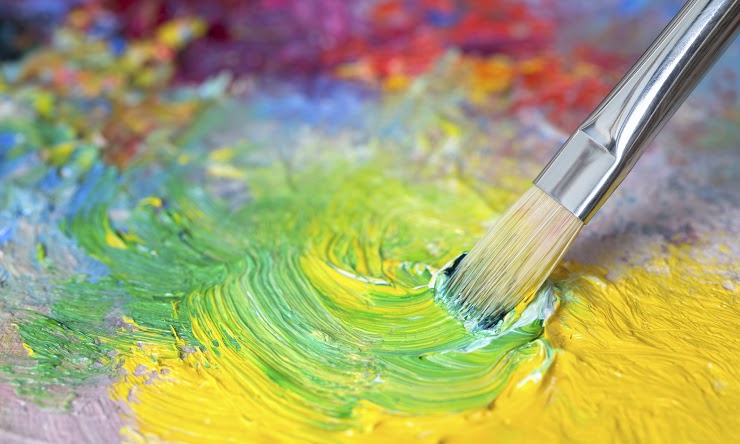
At many Minneapolis museums, pigments collide in a time-warped kaleidoscope of culture. This is certainly true of the Minneapolis Institute of Arts, where the oil paintings of Rembrandt, O’Keeffe, Van Gogh, and Goya burst from art-history textbooks onto the gallery walls. But even for seasoned museum-hoppers, these masterworks contain literal layers of mystery. Though it’s a centuries-long staple of Western art, oil paint conceals its own secret story of minerals, living plants, bones, chemistry, caves, and poison.
The Ingredients
Prized by pros and hobbyists alike for their rich tones and easy maneuverability, oils virtually slide across the canvas, filling in every minute detail and capturing the complex colors of the world around us. These qualities are due to two primary ingredients: the oil and the pigment.
The oil is a binding agent, or a carrier, for the pigment. It may be extracted from a plant such as flax, poppy, or saffron, each of which lends its paint a different drying time. Instead of evaporating, the oil polymerizes into a dry semisolid, a process that, depending on the oil and the atmosphere, might take hours or even decades. This makes oil paint the ideal medium for artists who like to continually edit and take time with their work.
Pigments traditionally come from minerals and plants—and sometimes even animals. According to the art historian rumor mill, Flemish painter Jan van Eyck ground up calcined bones. Spooky? Sure. But that’s not even the most morbid fact about oil paint pigments. Many of them are also highly toxic.
Oil paint in general has a tradition of toxic ingredients, but this is especially true with regards to color. Some dangerous pigments, like Paris green and yellow arsenic sulfide, no longer saturate brushes. But the concentrated blues, reds, and yellows of pigments such as cobalt, vermillion, and cadmium remain popular. While today’s pigments and carriers are largely safe for use, a well-ventilated work space is still ideal (particularly if the artist manipulates and extends the paint with noxious solvents such as turpentine).
The History
The earliest known oil paintings adorn Afghan caves dating back to 650 AD. But experts credit van Eyck for putting them at the center of Western art. From the 15th century onward, oil paint outpaced other media as artists' canvas covering of choice—even as the production of each color remained an exhausting process.
That changed in 1841, when American painter John Goffe Rand invented the metal paint tube. This made it easy to preserve and transport paint in batches of all sizes. Tubes freed artists from the time-consuming, knuckle-scraping, wrist-stiffening process of grinding pigment, which not only made the medium widely accessible, but also allowed for the development of an entire art movement: impressionism, which relied on plein air execution and on a thick application of already-made paint.







